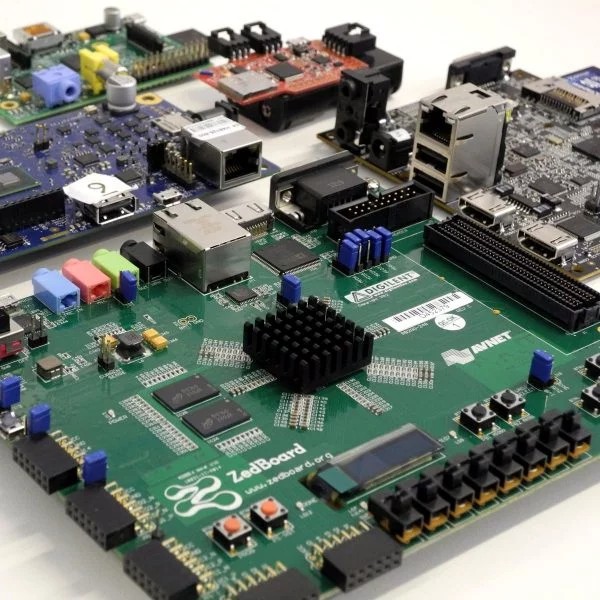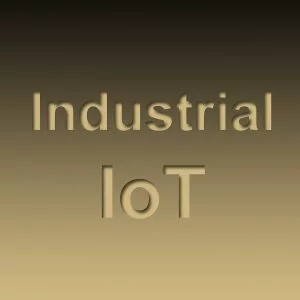
Embedded Hardware and Operating Systems
FREE
This course is intended for the Bachelor and Master’s students, who like practical programming and making IoTs applications! In this course we will talk about two components of a cyber physical system, namely hardware and operating systems. After completing this course, you will have the knowledge of both hardware components and operating systems. You are able to plan and use embedded operating systems in resource–constraint devices for Internet–of–Things (cyber physical system) applications. In addition, you can use Cooja simulation for designing and simulating wireless sensor network applications. We have 4 modules, each with a graded quiz in the end and finally we have one peer reviewed programming assignment In case you have no experience with C programming, please check you a practical course like: https://www.coursera.org/learn/arduino–platform. The course is actually quite fun at the end when you are playing around with Cooja simulation for IoTs applications. So you can create and simulate your own design for sensor network applications. A lot of features and examples of Contiki and Cooja can be explored via assignments. There are some optional assignments of wireless sensor network applications for students who want to explore more about embedded OS in IoTs applications. – Marco Ramirez /University of Turku …
Instructor Details
Courses : 1
Specification: Embedded Hardware and Operating Systems
|
49 reviews for Embedded Hardware and Operating Systems
Add a review Cancel reply
This site uses Akismet to reduce spam. Learn how your comment data is processed.

| Price | Free |
|---|---|
| Provider | |
| Duration | 8 hours |
| Year | 2016 |
| Level | Intermediate |
| Language | English |
| Certificate | Yes |
| Quizzes | Yes |

FREE






shaimaa –
the tutorial is so bad
Thirawat B –
Final assignment is very interested but unclear and lack of supporting document or material to help student finish assignment correctly.
Mohamed S F –
best course
Swathi G –
The course has a lot of useful information. It is paced very well for their intended audience (undergraduate/graduate students). It should be improved in terms of assignments, practice and mention more resources for further reading/practice.
Satyanarayana R Y –
Very good course, well structured
Hassan A –
Great Knowledge Gained! Thanks alot!
Bharat K –
In first three weeks the topics covered are not covered in much detail, but it is good enough to get started, and you can learn about that topics from other sources. The reason I am giving such a low rating to this course was, first I expected much more in depth knowledge and wide coverage of topics, and secondly the most important reason is that the week 4 of course sucks, there is no detail, no sources to understand topics, the forums are down right dead and there is no help from the staff (TAs) and faculty, the assignments of week 4 are not clear in terms of what to do and how to do, and it is very difficult to find relevant information on line. In my opinion you should take this course only when: 1) You already have a clear understanding of C, OS concepts. 2) You are ready to search on line for the topics taught even when you have no idea where you should start. 3) You have zero expectations from TAs and forums.
Zijun M –
This course gave me an overview on the Embedded Hardware and Operating System. It is not particularly designed for hands on experience or practical skills. But still, a good course for beginners like me.
Ronald H –
The topic is definitely interesting. The course, however, does not go very deep into the topic. The assignments are not well explained and the grading criteria is severely deficient and does not help students or reviewers understand what is expected. The assignments are not well coupled with the presented material. Week 4 Assignment 2, for example, is about Contiki/Cooja analysis tools, but there is no such topic covered in the course.
Jeffrey R S –
The last assignment (example) wasn’t so clear.
Bill W –
I wasn’t very happy. The subject material was very shallow; brief overviews of some aspects of the material with repeated references to “suggested materials” that didn’t actually exist. Even at the level of detail presented, there was a lot of info on slides that did not appear in the transcripts. It would have been useful to have the slides be downloadable. I didn’t like the design of the quizzes; this might be a coursera thing (I’ve seen the same thing in other classes), but the inclusion of 5 subparts of a one point question meant no “partial credit”, making a “5 question” quiz (with 20 odd things to get wrong/right) a lot more difficult to pass than they should have been. (In other MOOCs, I’ve seen such multi part questions handled by having the question as a whole be worth 5 points (for a 5 subpart question), and you get a point awarded for each subpart you get right, and not awarded for each one you get wrong (whether it should have been checked and wasn’t or should have been not checked and was.) There was no interaction with “staff” on the class forums. The “extra thought” topics were simplistic and only barely related to the class materials, and the participation that happened was … poor, like people thought they were getting points for “taking part” even if all they said was “I don’t know.” The professor seemed to have some strong opinions about “controversial” subjects, presented as facts, that I happen to disagree with, and didn’t really have any supporting material. (The big one for me was “FPGAs are lower power than MCUs.” Which I asked about on the forums, and was never answered. But also several several cases of “the advantage of XX os is that it has small memory requirements”, followed nearly immediately by several examples of other OSes described as even smaller.) Finally, for a 4 week class where the first 3 weeks have only short quizzes, I thought the “week 4” assignment: “download a VM and set up Contiki/cooja, write two programs and get them both peer reviewed by the end of the week” was unrealistic. Especially without “supported matierals”, tutorials on setup, or even copies of the sketchy instructions on the slides in the video. (I might not have been awful, given an extra week to complete. I gave up, though.) (existing forum message from a prior iteration of the class says “don’t use contiki 3.0 like the instructor talks about, or even 2.7 that he mentions. Go all the way back to 2.6.1…”) There was some interesting stuff there. The lack of “suggested materials” and downloadable slides were the biggest problems.
Wayne S –
It gives a brief introduction to everything. But sometimes it is hard to understand because the lectures are without any figures or charts.
Amina M –
perfect
Srijan S –
It’s a good course for advanced learning but not so much for beginners. I found the quizzes quite challenging and worst of all, vague.EDIT They were quick to follow up and have seemed to taken my feedback very seriously. Course looks great now, highly recommend
Lin G S –
Very poorly done course, boring lectures, very little context and practical motivations, quizzes that require rote memorization. I would recommend University of California, Irvine for basics on embedded systems, they have actual tutorials on Arduino and the Raspberry Pi, with a much more engaging lecturer. For something more in depth perhaps Edx’s Embedded Systems Shape the world, which is taught using the TM4C123G development board. Otherwise there are many other great books/resources out there.
Jari D –
Good basic introduction about hardware and operating systems for embedded systems in general. But the hands on exercises are at least partly build on outdated instructions on how to setup development environments leading to errors during the setup steps which is frustrating for students just starting to get into the topic.
Nebojaa S –
Not bad, but here are some things to be improved… Cons: most of the videos are quite like “There are a lot of interesting things here and there, read the documentation to learn more”. Also, several links are broken. Assignment for week 4 are quite unexplained, what to do and why. There is no hands on examples in video material, only pretty confusing theory.
deepankar m –
I think this course is for somebody with intermediate level of understanding. It does discuss basics in the first week but i think it need to me more structured. Later in the course you will learn about various OS and their benefits. Some of the concepts were very new for me. Still it just skims through diffrernt operating systms But i think the course need to be restructured. There should be emphasis on deploying on real hardware. PREREQUISITES: linux os understanding, Make file understanding , understanding the relative paths in make file is a must for getting the assignments right. Also the forum is almost Dead.
Syed S u H S –
great
Marlon M P d O –
The pronunciation of the professor was terrible. The last activity wasn’t coherent with what the course offered
Tarun K P –
Excellent resources provided by the instructor and emphasizes in gaining practical knowledge
Raj S –
Nicely explained
Sai N –
GOOD
itamar e –
very informative, not enough practices
Devansh C –
Lots of mistakes and unclear instructions, No response even after complaining in the forum
kim g –
Great class to get you started in Embedded systems.
Harsha V T –
This course is very good. Even though this course teaches you basic things it will help you to explore more. You will get to know about many new things.
Deleted A –
nice and very understandable
Sai S –
very useful to all students
nikhil –
nice
esha p –
good
Prasanna k –
superb course .Detailed explaination of every concept.
KOLUSU R Y –
GREAT COURSE
Elias R –
Good content, bad organization. I enjoyed watching the videos and reading through the materials to extend my knowledge about this topic. Unfortunately most of the assignments are not very clear and/or even contain mistakes. I also had to wait several weeks before my submissions got reviewed. Overall I learned some interesting stuff but got quite frustrated about the bad organization and the lack of feedback from the instructor. This course definitely needs an update from the creators!
Alan C M –
It is a good course, but I think lacks something worth to make it great. There were times when I was very bored about how the e
Pruthvi T –
It would be better if the lectures were less monotonous
Mohammed H –
great couse!!!
Dharmendra s –
its nice course
Pierre N –
was not good at all and i did not gain any experience thanks for wasting my time
zahed k p –
good
Michalis P –
The video lectures are good with valuable information, and the course gives you a broad introduction to embedded systems and embedded operating systems. Although quizzes and assignments are low quality and don’t help you with your understanding (that’s why I give 3/5).
Dang H K –
Some Document has the errors, I can not click to access to the link and some time this document not clearly for understanding.
vasudha –
Why can I not change course. I started with the first course by mistake,but I wanted tio start with the third one. Very poorly designed for asking such questions.
Narendhar k –
good course
Julian L –
It’s good, but I like to install it into a real microcontroller and application.
Chintan L –
best experience to learn something new in technology
Dvizma S –
The course is very generic overview of embedded hardware and operating systems. Too many OS’ have been covered in a very short time without going into actual details of any of them. Assignments are full of error and have little relation to the lecture material. Assignment 4 is completely out of scope. Would not recommend.
Anu S –
This is a good course to follow to get an overall idea about embedded OS and to learn the difference between them. Assignments are not that good because there are a lot of errors in those questions. Contiki and TinyOS installation guide is not updated and some commands are not valid with recent ISO images.
Arun J –
I have learnt about contiki and cooja simulation. The lab experience could have been better. There is not much support from the course organizers in the discussion forum. The lab manuals lack details and leaves the user to fill up the gaps. I don’t know if this is intentional.